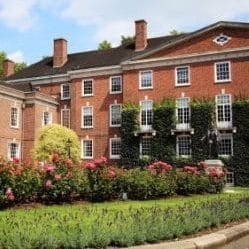The Bar Standards Board (BSB) has written to chief planning officers in central London to express concern at the difficulties chambers face in adapting historic buildings for disabled access.
“The barriers faced as a result of the lack of access to and within these buildings by disabled people seeking to enter the profession, disabled members of the profession, as well as disabled service users, are significant and contrary to equality and human dignity,” wrote BSB director general Mark Neale in his letter to the London Boroughs of Westminster and Camden and the City of London.
Mr Neale told last week’s meeting of the BSB’s main board that the work followed up concerns about the accessibility of many chambers – which often inhabit listed buildings – that were raised by disabled barristers taking part in the launch of its disability task force last December.
A subsequent meeting with the Inns of Court made it clear that “a challenge for both the Inns and chambers in making reasonable adjustments to historic buildings lies in achieving planning consent”.
This in turn prompted Mr Neale’s letter, which bids to “open a dialogue about the balance to be struck between accessibility and the preservation of historic buildings”.
Calling for a meeting with the planning authorities, he said the regulator was revising its equality rules and wanted to better understand “the interaction of our requirements for better access and your planning constraints”.
He said the BSB respected the history behind many barristers’ chambers but was also concerned about the lack of disability access.
“As the regulator, we have a duty under the Legal Services Act 2007, as well as the Equality Act 2010, to promote access to justice and diversity in the profession and to advance equality of opportunity.”
The revised equality rules would set expectations governing dignity and access for those who are disabled, he explained.
“In the light of our regular discussions with the Bar Council and the Inns of Court, we are concerned that chambers may find it challenging to comply with our prospective rules and meet these expectations whilst operating from within some of these listed buildings unless planning permission is granted to make the necessary changes, for example building ‘Sesame Steps’ or lifts to the outer structure of the building…
“We also hope to be able to inform your decision-making framework for planning applications by providing you with insight into the context within which the profession operates and the regulatory concerns.”

















Leave a Comment